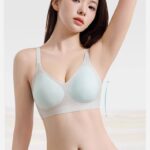Introduction to Women’s Clerical Clothing Styles and Trends
Women have always played a significant role in religious communities, and their attire reflects the depth of their commitment and the respect they command. The evolution of women’s clerical Clothing has seen a myriad of styles and trends, each with its unique characteristics and cultural significance. This article aims to provide a comprehensive guide to the various styles and trends in women’s clerical clothing, exploring their history, cultural significance, and modern interpretations.

Historical Context of Women’s Clerical Attire
The history of women’s clerical Clothing is rich and varied, with roots in religious traditions that date back centuries. From the simple robes of early Christian nuns to the ornate vestments of modern female clergy, the attire has evolved to reflect changes in religious practices, societal norms, and individual expression. Understanding the historical context of these garments provides insight into the significance of their design and the role they play in religious life.

Traditional Styles in Women’s Clerical Clothing
Traditional styles in women’s clerical Clothing often include elements such as the cassock, surplice, and stole. These garments are designed to convey a sense of dignity and authority, while also adhering to the modesty requirements of various religious doctrines. The use of specific colors and symbols can also denote rank or role within a religious community, adding another layer of meaning to these traditional garments.

Contemporary Trends in Women’s Clerical Fashion
In recent years, there has been a shift towards more contemporary and innovative designs in women’s clerical fashion. This includes the incorporation of modern fabrics, tailored fits, and even the use of technology in the design and function of clerical attire. These contemporary trends reflect a desire for women in religious roles to express their individuality and embrace the changing times while maintaining a connection to their spiritual roots.

Cultural Influences on Women’s Clerical Clothing
Cultural influences play a significant role in shaping the styles and trends of women’s clerical clothing. Different religions and cultural practices have their unique interpretation of modesty, respect, and authority, which is reflected in the attire of female clergy. From the vibrant colors of African religious garb to the understated elegance of European clerical fashion, these cultural influences add a rich tapestry of diversity to the world of women’s clerical clothing.

Conclusion: The Evolving Landscape of Women’s Clerical Attire
As society continues to evolve, so too does the landscape of women’s clerical attire. The blending of tradition with modernity, and the incorporation of cultural influences, ensures that the clothing of female clergy remains a dynamic and meaningful aspect of religious life. This guide serves as a testament to the enduring significance of women’s clerical clothing and its role in reflecting the spiritual journey of its wearers.







As a clergy member who travels frequently, I’d love to see more discussion on how women’s clerical clothing can be versatile and travel-friendly.
I wish the article had included more about the emotional connection clergy members have with their clothing. These garments often carry deep personal significance.
The historical context section was a bit dry for my taste. I would have preferred more engaging storytelling to bring the history of clerical attire to life.
I loved how the article emphasized the role of women’s clerical clothing in reflecting spiritual journeys. It’s a powerful reminder of the deeper meaning behind these garments.
I love how the article highlights the cultural influences on women’s clerical clothing. It’s fascinating to see how different regions interpret modesty and authority in such unique ways.
The article’s conclusion about the evolving landscape of women’s clerical attire is hopeful and optimistic. It’s a reminder that change is possible and that tradition and modernity can coexist.
The article’s conclusion about the evolving landscape of women’s clerical attire is hopeful and optimistic. It’s a reminder that change is possible and that tradition and modernity can coexist.
The article could benefit from a discussion on the cost of women’s clerical clothing. Are these garments affordable for all women in religious roles? It would be great to see more accessible options.
I wish the article had included more information on the cost-effectiveness of different styles. As someone on a budget, I’m always looking for affordable yet dignified options.
I’m curious about the durability of contemporary women’s clerical clothing. Are these garments made to last, or are they more about style than substance? It would be great to see a focus on both.
I appreciate the article’s focus on the role of women in religious communities. It’s important to recognize the significant contributions of women and how their attire reflects their commitment and respect.
The traditional styles mentioned in the article are classic and timeless. They have stood the test of time and continue to be relevant today. The cassock, in particular, is a symbol of authority and respect.
The article’s conclusion about the enduring significance of women’s clerical clothing is heartwarming. It’s a reminder of the deep connection between attire and spiritual identity.
I’m glad to see that women’s clerical fashion is evolving to include more contemporary designs. It’s important for religious attire to reflect the times we live in while still maintaining a connection to spiritual roots. The incorporation of technology in design is particularly innovative.